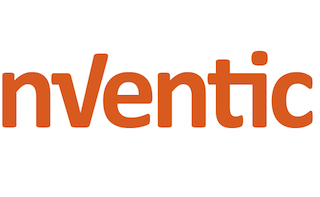
nVentic helped an industrial manufacturer identify a 45% reduction in inventories while improving service levels from 85% to 99%
Context
Our client was an industrial manufacturing firm with a high number of SKU's, problematic data, and a desire to improve fill rates as well as reduce working capital.
A major challenge facing the client were capacity constraints - often inventory was moved between locations purely for want of space, and this added superfluous stock movements to the data (not to mention logistics and handling costs).
Approach
nVentic evaluated the client's 7 principal sites, working with a small central team in the first instance. Some efforts needed to be put into data preparation, on account of a number of challenges, especially a fragmented and in places incomplete material master.
First sight of the data also highlighted an unusual problem - multiple items were showing negative stock levels! While running our evaluation, we decided not to correct the negative stocks so that we could maintain data integrity and highlight the scale of the problem. We also set target service levels at 99% to help the client identify opportunities to reduce shortages as well as excesses.
Early in the evaluation, nVentic could recommend a number of process improvements that would be beneficial in their own right, as well as improving future data quality. The negative stock issue was caused by gaps in the booking process. We also recommended a rationalisation in the number of SKU's. The client was already aware of the issues around capacity constraints and wasteful stock movements but needed help to free up space while improving fill rates and this is where nVentic's evaluation was invaluable.
Results
Despite the challenges, we identified an overall reduction potential of 45%. Using nVentic's clear and simple to follow evaluation, the client decided to set a target for the first 3 months of 25% and to focus on the 500 SKU's with the greatest improvement potential. Given the quality of the underlying data, checks were done on all key parameters (such as lead time) for each SKU before implementing changes. Planners then bridged the gap between our recommended levels and existing levels stepwise, so that they could further minimize risks caused by data inaccuracy.
The client also targeted the SKU's with the greatest risk of shortage and built up enough stocks to improve service levels. The outputs of our evaluation provided the full planning team with a 6 month action plan, and it was immediately apparent that during that time a major improvement in inventory levels could be realised. Refreshes of nVentic's evaluation every 6 to 12 months will allow benefits to be sustained.
Our client was an industrial manufacturing firm with a high number of SKU's, problematic data, and a desire to improve fill rates as well as reduce working capital.
A major challenge facing the client were capacity constraints - often inventory was moved between locations purely for want of space, and this added superfluous stock movements to the data (not to mention logistics and handling costs).
Approach
nVentic evaluated the client's 7 principal sites, working with a small central team in the first instance. Some efforts needed to be put into data preparation, on account of a number of challenges, especially a fragmented and in places incomplete material master.
First sight of the data also highlighted an unusual problem - multiple items were showing negative stock levels! While running our evaluation, we decided not to correct the negative stocks so that we could maintain data integrity and highlight the scale of the problem. We also set target service levels at 99% to help the client identify opportunities to reduce shortages as well as excesses.
Early in the evaluation, nVentic could recommend a number of process improvements that would be beneficial in their own right, as well as improving future data quality. The negative stock issue was caused by gaps in the booking process. We also recommended a rationalisation in the number of SKU's. The client was already aware of the issues around capacity constraints and wasteful stock movements but needed help to free up space while improving fill rates and this is where nVentic's evaluation was invaluable.
Results
Despite the challenges, we identified an overall reduction potential of 45%. Using nVentic's clear and simple to follow evaluation, the client decided to set a target for the first 3 months of 25% and to focus on the 500 SKU's with the greatest improvement potential. Given the quality of the underlying data, checks were done on all key parameters (such as lead time) for each SKU before implementing changes. Planners then bridged the gap between our recommended levels and existing levels stepwise, so that they could further minimize risks caused by data inaccuracy.
The client also targeted the SKU's with the greatest risk of shortage and built up enough stocks to improve service levels. The outputs of our evaluation provided the full planning team with a 6 month action plan, and it was immediately apparent that during that time a major improvement in inventory levels could be realised. Refreshes of nVentic's evaluation every 6 to 12 months will allow benefits to be sustained.
Would you like to talk to one of our experts? Contact us

